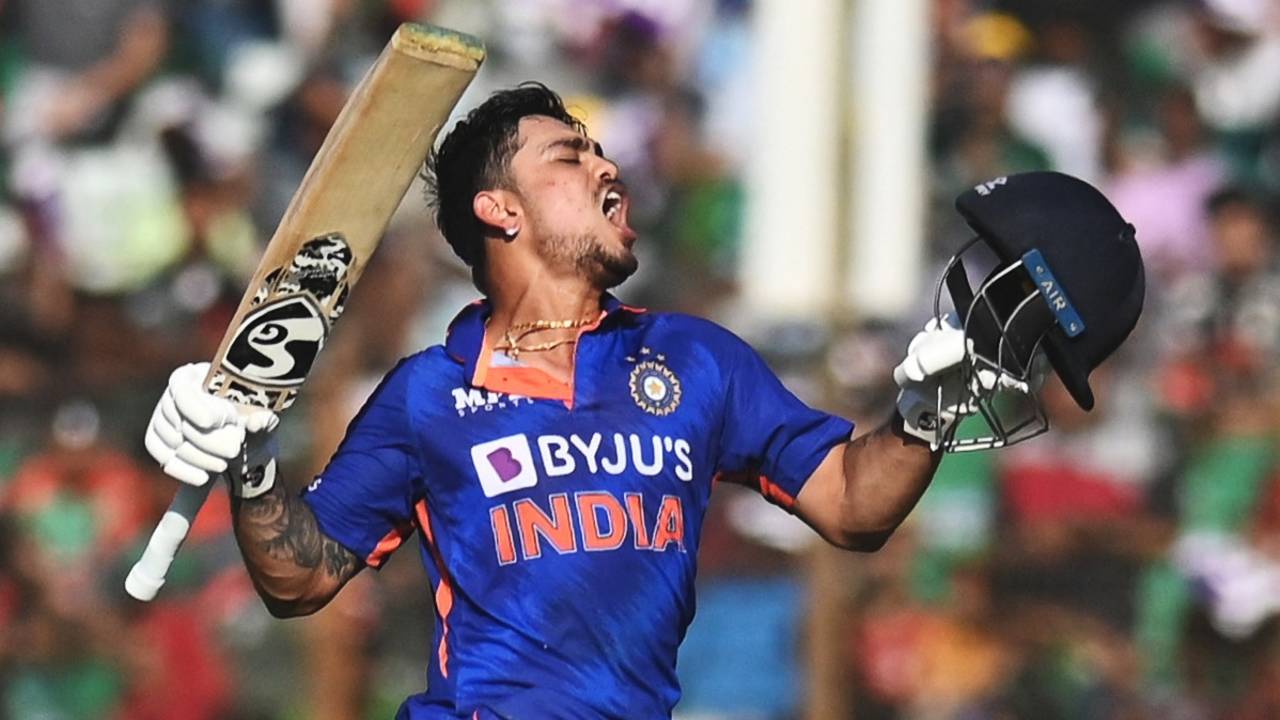Ishan Kishan drags India's top-order batting into the 2020s
He obliterated the record for the fastest double-hundred, but the bigger story lay in his unfettered approach
Sidharth Monga
10-Dec-2022
The first ball that Ishan Kishan faced after the first powerplay, he went hard at Shakib Al Hasan. The ball stopped on him, and lobbed in the air, but fell short of long-on. On another day this could have carried to a fielder. Even if it had, it would have been a refreshing change for India's crowded top-order batting: a score of 33 off 41 and no intention of letting the bowlers get a breather as the field spread.
As it turned out, Kishan ended up playing an innings that might well drag India's top-order batting into the 2020s. He obliterated records for the fastest double-hundred and the earliest one in a team innings, but there is a bigger story in the breakdown of the numbers.
India's leadership is trying to get its batters to adopt a bolder approach in ODIs, which has shown mixed results. Since the 2019 World Cup, they have been the second-quickest-scoring team in the first ten overs, behind England, but whenever Rohit Sharma, Shikhar Dhawan and Virat Kohli have played together, India's starts have become considerably slower, their run ran dropping from 5.30 to 4.95.
Even when India make good starts, there is a certain formula by which they score runs. It's based on gradual acceleration with wickets in hand, and a big explosion at the end. It works to an extent, which shows in their general overall record in ODI cricket, but doesn't maximise India's enviable limited-overs batting stocks.
Kishan didn't follow any formula. Two balls after that miscue, he attacked again at the sight of the slightest width. Two balls later, again. And again. And again. He respected a good over from Mehidy Hasan Miraz, nearly playing out a maiden, but if there was any formula it was to keep looking for boundaries. This was the first time since 2009 that an India batter scored 50 or more runs from overs 11 to 20; it won't surprise you that Virender Sehwag was the batter on that occasion.
Batting in T20 is, of course, easier because teams have 10 wickets in 20 overs, but on an individual level, ODIs present an opportunity that T20 specialists don't often get. An extra fielder has to be inside the circle for overs 11 to 40, which has made the format difficult for spinners. It is just one extra infielder, but it makes defensive bowling difficult.
Kishan remained intent on picking that boundary. If they pitched short, he pulled square. If they sent a man back, he played the flick-pull over short fine leg. If they defended square, he went over the extra fielder who had to be brought up to mid-off or mid-on. The margin for error becomes minuscule when bowling to such batters.
